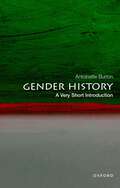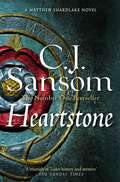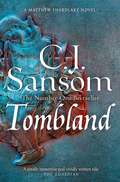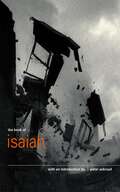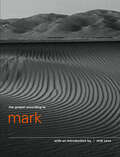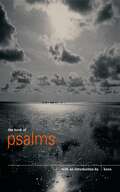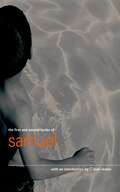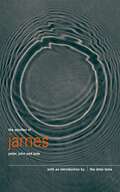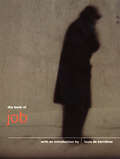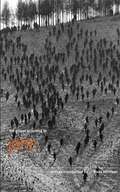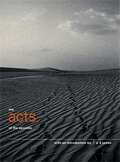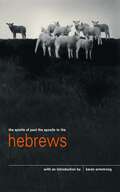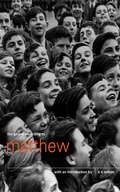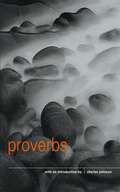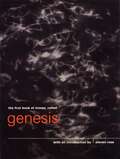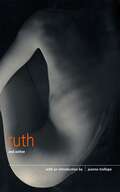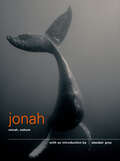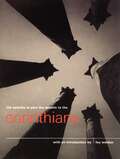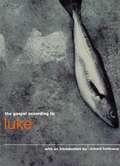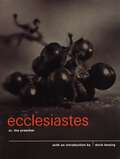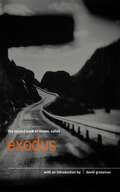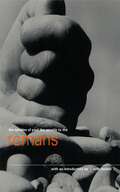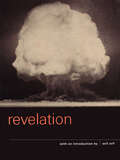- Table View
- List View
Gender History: A Very Short Introduction (VERY SHORT INTRODUCTIONS)
by Antoinette BurtonAntoinette Burton argues that gender history is hiding in plain sight, at work everywhere we look. This volume introduces the field of gender history--its origins, development, reception, recalibrations, and frictions. It offers a set of working definitions of gender as a descriptive category and as a category of historical analysis, tracing the emergence, usage, and applicability of these entwined subjects across a range of times and places since the 1970s. Inevitably political, gender history has taken aim at the broader field of historical narrative by asking who counts as a historical subject, what difference gender makes, and how attention to it subverts reigning assumptions of what power, culture, economics, and identity have been in the past--and what they are today. The book explores how gender analysis has changed interpretations of the histories of slavery, capitalism, migration, and empire. As a field, gender history has been extraordinarily influential in shaping several generations of scholars and students. The fact that its early emphasis on the relationship between masculinity and femininity was part of a larger set of challenges to universal history by poststructuralism, postmodernism, and postcolonialism positions it at the heart of some of the most fractious intellectual debates of the late twentieth and early twenty-first centuries. And, as part of the movement toward gender equality that is key to modern western progress, gender history has been caught up in the culture wars that continue to shape post-global society. What is intriguing and ultimately defining about gender history is the way that the centrality of gender, so important for revealing how identity is structured in and through regimes of power, has been unable to hold its own over the half century of the field's own history. The practice of gender history has always run up against the forces of race, class, and sexuality that challenge the singularity of gender itself as an explanatory category of historical analysis. That powerful, unruly tension is at the heart of this Very Short Introduction.
Gender History: A Very Short Introduction (VERY SHORT INTRODUCTIONS)
by Antoinette BurtonAntoinette Burton argues that gender history is hiding in plain sight, at work everywhere we look. This volume introduces the field of gender history--its origins, development, reception, recalibrations, and frictions. It offers a set of working definitions of gender as a descriptive category and as a category of historical analysis, tracing the emergence, usage, and applicability of these entwined subjects across a range of times and places since the 1970s. Inevitably political, gender history has taken aim at the broader field of historical narrative by asking who counts as a historical subject, what difference gender makes, and how attention to it subverts reigning assumptions of what power, culture, economics, and identity have been in the past--and what they are today. The book explores how gender analysis has changed interpretations of the histories of slavery, capitalism, migration, and empire. As a field, gender history has been extraordinarily influential in shaping several generations of scholars and students. The fact that its early emphasis on the relationship between masculinity and femininity was part of a larger set of challenges to universal history by poststructuralism, postmodernism, and postcolonialism positions it at the heart of some of the most fractious intellectual debates of the late twentieth and early twenty-first centuries. And, as part of the movement toward gender equality that is key to modern western progress, gender history has been caught up in the culture wars that continue to shape post-global society. What is intriguing and ultimately defining about gender history is the way that the centrality of gender, so important for revealing how identity is structured in and through regimes of power, has been unable to hold its own over the half century of the field's own history. The practice of gender history has always run up against the forces of race, class, and sexuality that challenge the singularity of gender itself as an explanatory category of historical analysis. That powerful, unruly tension is at the heart of this Very Short Introduction.
Heartstone: Murder Mystery and Tudor History in This Atmospheric Historical Fiction Novel (The Shardlake series #5)
by C. J. Sansom'C. J. Sansom’s books are arguably the best Tudor novels going' – The Sunday TimesHeartstone is the fifth spellbinding mystery in C. J. Sansom’s number one bestselling Shardlake series, perfect for fans of Hilary Mantel and Philippa Gregory.England, 1545. England is at war. Henry VIII’s invasion of France has gone badly wrong, and a massive French fleet is preparing to sail across the Channel.Meanwhile, Matthew Shardlake is given an intriguing legal case by an old servant of Queen Catherine Parr. Asked to investigate claims of ‘monstrous wrongs’ committed against a young ward of the court, Shardlake and his assistant Jack Barak journey to Portsmouth. There, Shardlake also intends to investigate the mysterious past of Ellen Fettiplace, a young woman incarcerated in the Bedlam.Once in Portsmouth, Shardlake and Barak find themselves in a city preparing for war. The mysteries surrounding the two cases involve Shardlake in reunions both with an old friend and an old enemy close to the throne. And soon, events will converge on board one of the King’s great warships gathered in Portsmouth harbour, waiting to confront the approaching French fleet . . .Heartstone is the fifth novel in C. J. Sansom's gripping historical series. It is followed by the sixth book in the series, Lamentation.
Tombland (The Shardlake series #7)
by C. J. Sansom'C. J. Sansom’s books are arguably the best Tudor novels going' – The Sunday TimesTombland is the seventh epic novel in C. J. Sansom's number one bestselling Shardlake series, perfect for fans of Hilary Mantel and Philippa Gregory.England, 1549. Two years after the death of Henry VIII, England is sliding into chaos. The economy is in collapse, inflation rages and rebellion is stirring among the peasantry . . .Since the old king’s death, Matthew Shardlake has been working as a lawyer in the service of Henry’s daughter, the Lady Elizabeth. The gruesome murder of Edith Boleyn – a distant relative in Norfolk – sends Shardlake and his assistant Nicholas Overton to the summer Assizes at Norwich. And then East Anglia explodes, as peasant rebellion breaks out across the country. The yeoman Robert Kett leads a force of thousands in overthrowing the landlords and taking over Norwich, England’s second largest city.Now Shardlake must decide where his ultimate loyalties lie, as government forces in London prepare to march north and destroy the rebels. Meanwhile he discovers that the murder of Edith Boleyn may have connections reaching into both the heart of the Norfolk gentry and the rebel camp itself . . .This is the seventh novel in C. J. Sansom's thrilling historical series that started with Dissolution. Includes an Historical Essay from the author on Reimagining Kett's Rebellion.
Lamentation: A Shardlake Novel (The Shardlake series #6)
by C. J. Sansom'C. J. Sansom’s books are arguably the best Tudor novels going' – The Sunday TimesLamentation is the sixth breathtaking historical novel in C. J. Sansom’s number one bestselling Shardlake series, perfect for fans of Hilary Mantel and Philippa Gregory.England, 1546. King Henry VIII is dying. Meanwhile, his Protestant and Catholic councillors are engaged in a final and decisive power struggle to control the government of Henry’s successor, eight–year–old Prince Edward. As heretics are hunted across London, the Catholic party focus their attack on Henry’s sixth wife, Matthew Shardlake’s old mentor, Queen Catherine Parr, and Shardlake is unexpectedly summoned to Whitehall Palace.For the Queen has a secret. She has written a confessional book, Lamentation of a Sinner, so radically Protestant that if it came to the King’s attention it could bring both her and her sympathizers crashing down.When the book inexplicably vanishes, and a single page is found clutched in the hand of a murdered printer, Shardlake must help the desperate Queen. His loyalty will drive him into a swirl of intrigue inside the palace, where Catholic enemies and Protestant friends can be equally dangerous, and the political opportunists, who will follow the wind wherever it blows, more dangerous than either . . .Lamentation is the sixth novel in C. J. Sansom's gripping historical series. Continue the series with book seven, Tombland.
The Book of the Prophet Isaiah (The Pocket Canons #16)
by Peter AckroydThis is the text of the book of Isaiah, the first and foremost of the 17 'prophetic' books of the Old Testament. Contrasting with images of wrath and destruction are visions of an age of peace and harmony. The biblical text is introduced by Peter Ackroyd.
The Gospel According to Mark (The Pocket Canons #8)
by Nick CaveThe earliest of the four Gospels, the book portrays Jesus as an enigmatic figure, struggling with enemies, his inner and external demons, and with his devoted but disconcerted disciples. Unlike other gospels, his parables are obscure, to be explained secretly to his followers. With an introduction by Nick Cave
The Book of Psalms (The Pocket Canons #15)
by BonoThrough the ages, the book of Psalms has been regarded as the most inspirational of all the Bible's books. It is not known how or when the collection of 150 lyrical poems came into existence, though many are ascribed to King David. The text is introduced by U2 singer Bono.
The First and Second Books of Samuel (The Pocket Canons #14)
by Meir ShalevThis volume presents the Old Testament book of Samuel, with an introduction by Meir Shalev. In two parts, the book tells the story of one of the most charismatic of Old Testament characters, King David and his meteoric rise and inevitable fall.
The Epistles of James, Peter, John and Jude (The Pocket Canons #22)
by Dalai LamaAlongside the epistles of Paul in the New Testament are short letters of four unknown early Christian writers, James, Peter, John and Jude. Those of Peter were composed in excellent Greek, James emphasizes the need for good works and Peter berates false prophets. With an introduction by the Dalai Lama.
The Book of Job (The Pocket Canons #3)
by Louis de BernièresSuffering in an unjust world is the theme of this book. God punishes Job, a wealthy and pious man, after giving an assertion to Satan that his subject will never curse him. It goes on to explain why Job has suffered, raising ethical questions about the nature of divinity. The text is introduced by author Louis de Bernieres
The Gospel According to John (The Pocket Canons #10)
by Blake MorrisonIn both the literary sense and content, this gospel differs dramatically from the others in that it expresses the movement towards agnosticism and is more concerned with explaining high concepts like truth, light, life and spirit than recounting historical fact. With an introduction by Blake Morrison
The Acts of the Apostles (The Pocket Canons #19)
by P.D. JamesActs is the sequel to Luke's gospel and tells the story of Jesus's followers during the 30 years after his death. It describes how the 12 apostles, formerly Jesus's disciples, spread the message of Christianity throughout the Mediterranean against a background of persecution. With an introduction by P.D. James
The Epistle of Paul the Apostle to The Hebrews (The Pocket Canons #21)
by Karen ArmstrongHebrews marks a parting of the ways for Jews and Christians of the first century. It makes a case for the superiority of the new Christian 'faith' over old Hebrew orthodoxy and draws on the Old Testament for precedents for Jesus's ministry and to paint a picture of Jesus.
The Gospel According to Matthew (The Pocket Canons #7)
by A.N. WilsonRecounting the birth, baptism, crucifixion and resurrection of Christ, Matthew is regarded as the most ideological portayal of Jesus's life. Some view it as a deliberate parallel to the written teachings of Judaism while the Catholic Church sees the book as a marker for its own authority. With an introduction by A.N. Wilson
Proverbs: The Bible (The Pocket Canons #4)
by Charles JohnsonDrawn from the wisdom of ancient oral tradition, this book contains two main doctrines: teaching the attainment of wisdom, and warning against life's pitfalls, from excessive drink to promiscuity. The text is introduced by Charles Johnson.
The First Book of Moses, Called Genesis: The Bible (The Pocket Canons #1)
by Steven RoseGenesis covers some of the most famous stories of all time, including the garden of Eden, Noah's Ark and Cain and Abel. Using the emergence of the people of Israel as a starting point, it tells the story of the beginning of the world as ancient writers understood it. The text is introduced by Steven Rose.
The Books of Ruth and Esther (The Pocket Canons #13)
by Joanna TrollopeThis volume presents the texts of two Old Testament books, Ruth and Esther, two of the very few biblical stories to focus on women. Ruth in particular has attracted much attention from feminist scholars, though it reinforces age-old notions of male dominance. With an introduction by Joanna Trollope
The Books of Jonah, Micah and Nahum (The Pocket Canons #17)
by Alasdair GrayThis text presents the books of Jonah, Micah and Nahum. The book of Jonah shows the people of Nineveh being forgiven, yet this overturns usual biblical narrative such as Micah and Nahum where Israel's enemies are expected to get their come-uppance. With an introduction by Alasdair Gray.
The Epistles of Paul the Apostle to The Corinthians (The Pocket Canons #11)
by Fay WeldonA figurehead of the early Christian church, Paul sets out some of his thoughts on strife and division, spirituality, the bond of marriage and hopes for his own immortality in this book. With an introduction by Fay Weldon
The Gospel According to Luke (The Pocket Canons #9)
by Richard HollowayThe Gospel According to Luke is the third, and longest, of the four gospels. It is an account of the life and ministry of Jesus of Nazareth and details the story of his life, from the events of his birth, to his crucifixion and the Ascension.
Ecclesiastes or, The Preacher (The Pocket Canons #5)
by Doris LessingAncient tradition suggests that this world-weary lament is the work of Solomon in old age. Casting its eye over the transient nature of life, the book questions the striving for wisdom and the truth, choosing instead to espouse the value of living for the moment. The text is introduced by Doris Lessing.
The Second Book of Moses, Called Exodus (The Pocket Canons #2)
by David GrossmanA central theme running through the Bible, Exodus tells of the mass movement of people, including the Israelites' escape from slavery, the wanderings of Moses and his followers and the Ten Commandments given to Moses on Mount Sinai. The text is introduced by author David Grossman.
The Epistle of Paul the Apostle to The Romans (The Pocket Canons #20)
by Ruth RendellPaul was the most influential figure in the early Christian church. In this epistle, written to the founders of the church in Rome, he sets out some of his ideas on the importance of faith in overcoming mankind's innate sinfulness and in obtaining redemption. With an introduction by Ruth Rendell
Revelation: A Revelation Of The Recent Past And The Distant Future (The Pocket Canons #12)
by Will SelfThe final book of the Bible, Revelation prophesies the ultimate judgement of mankind in a series of allegorical visions, grisly images and numerological predictions. According to these, empires will fall, the "Beast" will be destroyed and Christ will rule a new Jerusalem. With an introduction by Will Self.
